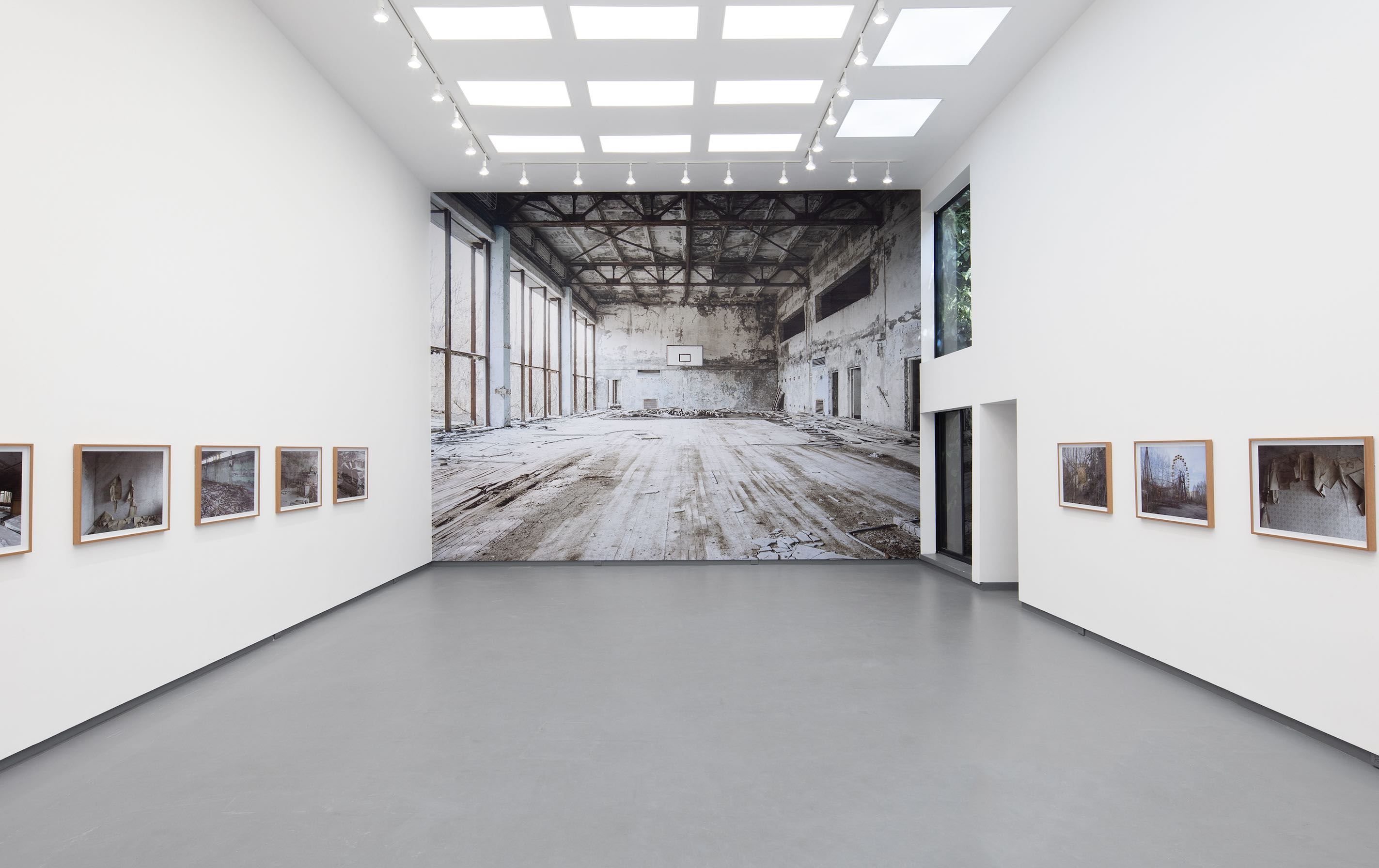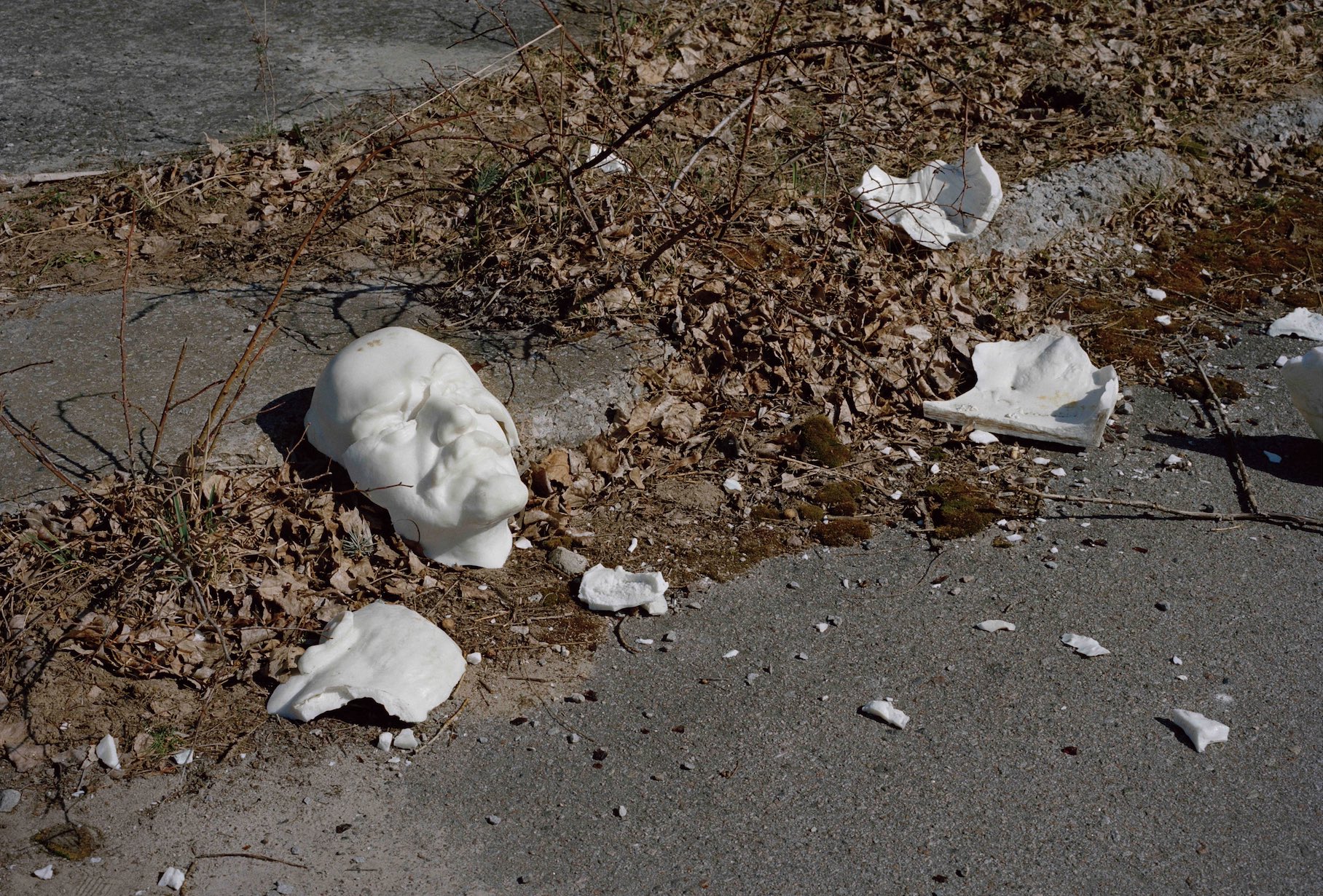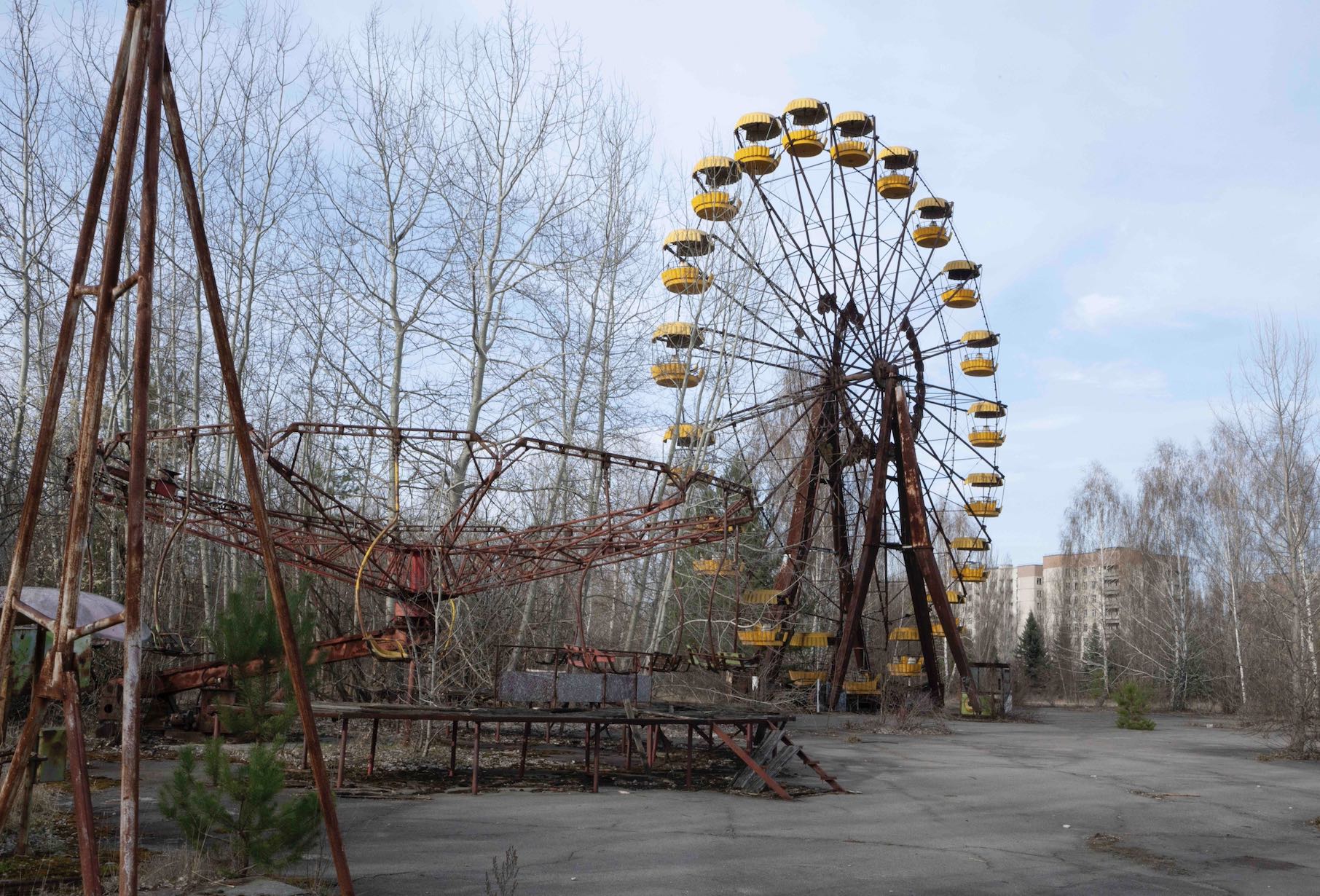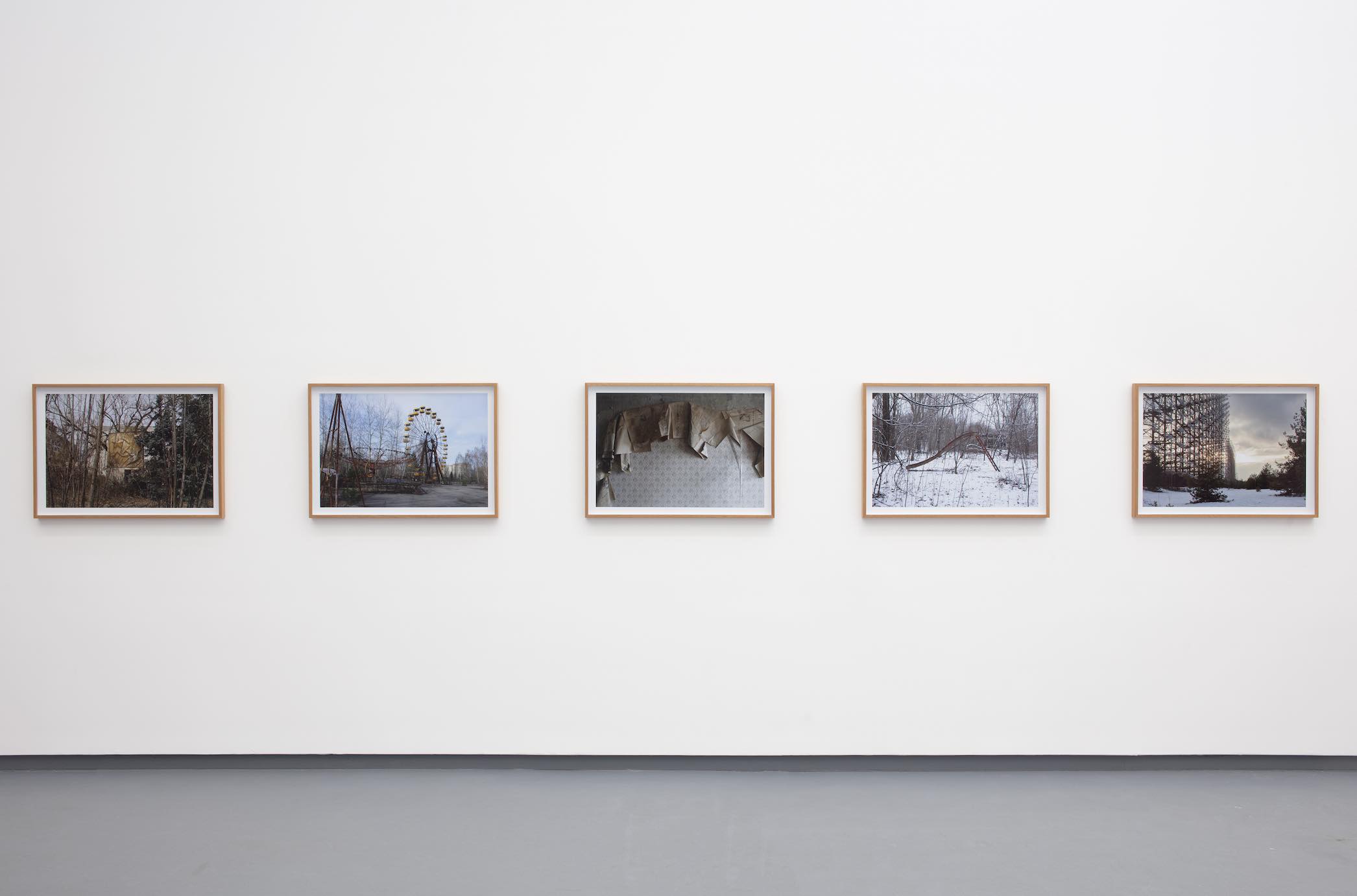
Review
Between The Ghost and Vibrating Matter: On 'The Zone, Chernobyl' by Raúl Ortega Ayala
by M.S. Yaniz
At Proyectos Monclova
Reading time
5 min
Inside the modernist facade of Proyectos Monclova, after crossing a white corridor, one then reaches the large gallery room, and in front there appears a display of space and time. It’s the real-size 1:1 printing of a photograph by Raúl Ortega Ayala. A basketball court in the city of Pripyat, Ukraine. This space was abandoned 36 years ago after the Chernobyl nuclear accident. The image of the court, whose size almost exactly matches the dimensions of the gallery in which it is exhibited, works as a fold of broken modernity. It seems to be inhabited by the ghosts of the utopian failure of nuclear development. It’s a trompe l’oeil of history. Like a portal, this wall functions like a mirror between the two blocks of the Cold War: a capitalism rendered triumphant, with its neat aesthetic white cube, materially vibrates with the broken dreams of socialist modernity.
Upon leaving the astonishment of the trompe l’oeil and turning to the rest of the walls, I observed a series of medium-format photos bearing an aura of ruin and melancholy, objects lost in a long stretch of time. The second image on the left was a broken face belonging to a statue of Lenin, exhibited as a trophy: a first recognizable sign.

The Zone, Chernobyl (2013-2020) is a series produced by the artistic-anthropological practice of the artist Raúl Ortega Ayala, who traveled to Ukraine for seven years, possibly motivated by genuine curiosity regarding the question: What does a historical event look like? How do time, dreams, and failure become visible? What animates the photo series as well as the film is dating an event’s permanence, a State’s moods prior to the abandonment of space by radiation, the affects remaining impregnated in matter, and the modernizing fantasies concealed by dust.
History tells us about Chernobyl as an unprecedented event, as a grand incident in which science and government failed. A loss not only of geography, the ecosystem, and the people, but of the modern mentality itself. Man’s defeat by matter. But other things also took place in the interstices of the geopolitical history of the Cold War, and that’s where Raúl Ortega’s art appears, in the singularity of the historical. The photos show an amusement park that never opened, houses, schools, and ferris wheel; a series of projects that fell flat in a matter of days.

The exhibition is rounded off and sets forth its scope with the film The Zone, Chernobyl (click here to watch the trailer). Four times three men and a woman walk from the horizon to the center of the shot. Four times three men and a woman introduce themselves and recount a first-person ethnography of a planetary disaster. Four times they make tangible the tenuous experience of an event that will have damaged the earth for millions of years.
Raúl Ortega toured Pripyat, Ukraine, with Alexander Yesaulov, Alexander Sirota, Vladimir Tarasov, and Natalya Panteleevna, accompanied by her son; in 1986 they were the deputy mayor, a little boy, a physical education teacher, and a mother with a son. They speak about how they experienced the accident and how the life they previously had was ripped away. A forced migration that nullifies any possibility of nostalgia for the homeland. Since there’s no possibility of return owing to the radiation, they become migrants from a fragment of a dead world. In their walks with Raúl Ortega, they pass through spaces torn from historical time, as they only exist in the stories of those who lived them. They are places that can no longer produce experience. The artist’s own investigations and his relationship with the space is mediated by his contact with the people who lived there and the frustrated plans of the Soviet Union that lie neutralized.

There’s a correlation between memory impregnated in space, abandoned as a ruin with its phantasmagoria, and the atom’s presence as an agent of change. In the video there appears the caption, “Let the atom be a worker, not a soldier.” There we find encrypted a strong materialistic thought. Ortega’s work calls for listening to the collective history retained in the objects and spaces of a political and scientific project that gave real agency to the minimal unit of the physical. In this double listening, the psychic life of what is thought to be inert matter becomes visible and the senses are opened to a materiality that vibrates and invokes its political and vital agency.
The atom vibrates in the memory of the men who saw matter collapse, whose government put human beings on the level of the production chain. The Zone, Chernobyl is a time torn from its space, the memory of the world in broken matter. Ultimately, silence in a very long expanse of space.
Translated to English by Byron Davies
Published on August 5 2022